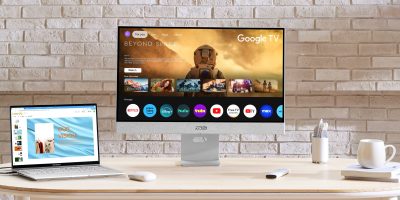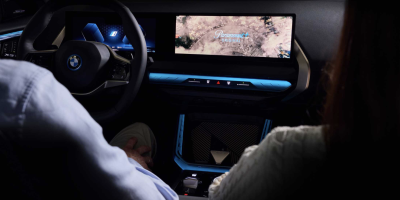Android’s not perfect. And you’d be a fool to think so. One of the issues with Android that has long irked me about our mobile OS is what I call “screen lag.” Now, I’m not talking about framerate (which could use some improvement as well), but I’m talking about how quickly the screen responds and follows your finger when moving it across the screen. Whether it’s the little unlock ring on Honeycomb/ICS or simply drawing on the screen in an app like Draw Something (add me: Gamercore), I’ve oft wondered how, if ever, Android would be able to improve upon this.
Some of the other mobile OS’s like WP7 and iOS have what feels like significantly less lag thanks to a butter smooth framerate but still, the problem persists. Recently, Nvidia showed us how they hope to better alleviate this issue with their Tegra 3’s processor using a little something they’re calling DirectTouch, that offloads some of the touchscreen processing across its 5 cores. Check out their video below.
Impressive? Sure. But nowhere near impressive to what Microsoft is cooking up. They uploaded a video to YouTube that shows us what we can look forward to from manufacturers in the future on touchscreen devices. I’m talking about zero touchscreen latency. Now, I’m sure this video wont appeal to everybody, but for the truly geeky, this is essentially nerd-porn. Enjoy.
So, what did you guys think? Do you think a touchscreen with zero latency could help the overall Android user experience? Or is this something you’ve never considered, nor give a hoot about?











There is a huge difference between the two videos: Nvidia’s method is presented on an actual tablet, while Microsoft’s is just a projector of some kind, not a real display, so it’s not yet applicable in real life use.
if you use your brain, every breakthrough starts off the way microsoft is presenting it, and you dont know what they are doing internally and on what internally…also the performance between the two will obviously go in microsoft favor if it ever matures to reach actual products
That’s great and all, but there is no guarantee that every promising research will mature into an actual product, and we have no idea how long it will take if it does. I’m just saying it’s not fair to compare these two videos.
don’t really think it is a direct comparison, more like showcasing the available techs that is trying to achieve better user experience through lag elimination.
Nailed it.
Microsoft’s video above is NOT a tech at all. It is merely an example of what it would LOOK like if there were some tech that could accomplish what its showing, this article’s name is misleading. Purely an experience focused research project, I thought it was always obvious 1ms lag would be incredibly better… The Tegra 3’s video is showcasing a claimed 5ms response time with their samples per second app. When compared with the Microsoft video, the Tegra 3 looks worse than 10ms (anyone know if the actual screens have inherent lag?)
I think a cross between nVidia’s tech and Microsoft’s proposed tech would be awesome. nVidia’s tech allows for faster touch detection. Microsoft takes the touch data and display’s things immediately. We need both to make things silky smooth. Imagine this kind of tech with pen tech. Basically, Android tablets with all three technologies would be super useful for art and taking notes
Yup. The Galaxy Note, while fun to draw and doodle with, suffers from horrible lag. This would be great for those devices :D
you’re going to be *extremely* performance limited no matter how you look at it. Latency isn’t really something that goes away by simply enabling 1ms latency. It’s not an “on” switch.
When a processor in your phone gets to 50% usage, the latency is going to go up by 8-10x, minimum. To act like this is going to be able to be at 1ms all the time is a complete misnomer. Why? more powerful devices means more powerful software.
In short, this will never happen the way we all want it to, and that’s why it’s a tech demo at best. That’s not to say we wont’ be able to get down to 1-10ms latency, but it’ll never be a “1ms latency at all times” situation.
Actually, I’m aware of that. However, with this technology, we’d remove the bottleneck from touch input and screen response, back to the CPU. I think keeping bottlenecks confined to CPU is usually the best way to go, as there are plenty of ways to improve software to take advantage of the capabilities of the CPU.
In short, while this isn’t some magical tech that will make everything smooth 100% of the time, it will help a TON, as it moves the bottleneck. Also, the nVidia tech keeps the touch input from being CPU intensive, and with better and better GPU’s, screen output isn’t going to really affect the CPU either. In short, I think there would be a VERY noticeable improvement to overall usability, and many applications will directly benefit from it.
Gotta agree with ExtremeGadgetGuy.
You are looking at the video wrong,
When we get to the point when this technology is matured for consumer use, don’t you think all other technologies will improve too? Why are you judging it with our current mobile CPU technology?
I’m not. I’m saying the opposite…
The reply is meant for Mat_t’s “In short, this will never happen the way we all want it to, and that’s why it’s a tech demo at best.”
Clicked wrongly.
okay, so let’s play this out.
“we made it GPU based instead of CPU”
“now when people play games the phone has input lag”
ever heard of this happening with PC gaming before?
hint: all the time. Even with discrete graphics cards which have way more bandwidth than phones do/will (note: even comparing today’s cards to 5 years from now).
This is a perpetual issue which will *NEVER* go away due to the nature of the issue. I do say never on this, because it’s not a resolve-able situation. You can reduce the latency, but it will never be simply “Resolved”. Every new gen of phone means more demanding programs means another generation of phones. It’s a permanently repeating cycle.
that’s not to say that it’s not a great thing to focus on, but to act like it can be fixed is just not realistic. Or did you not notice that not a single instance of microsoft’s “we can fix latency” involved things that are taxing on the GPU? Nothing was animated, you couldnt’ see what was running in the background (aka nothing), etc. That isn’t an accident. It’s called FUD, because it’s not even a true tech demo.
Actually, if you read my comment, I said that it would HELP, NOT FIX the issues. It would fix current gen apps, and it would improve overall usability. Its not ready “now”, but it still would be better than not having the improvement.
Like I said, it removes the current bottleneck, which is touch input and screen latencies. That puts it back in the GPU’s court, which means that every new GPU will bring improvements, rather than waiting for screen response and input lag to keep up.
Also, it comes down to how well and app or game is programmed AND optimized for the phone/tablet/etc. If done right, you can do amazing things with very limited resources. Most people/devs just don’t put in the effort or time to get it right.
It won’t fix next gen games (that’s up to GPUs), but it will fix most current gen apps, as they mainly have input lag directly tied to poor response times of hardware.
“now when people play games the phone has input lag”
ever heard of this happening with PC gaming before?
Actually….
All the time!
Mostly at FPS tournaments when I was getting handshakes and congratulations, and also in later years when I was kicking people out of my raiding guild during progression bosses.
Kids used to blame it on the controller through tearful sobs, but no matter how authentic it seemed I always thought they were just trying to convince themselves.
Input lag in gaming is a myth.
“My Controller is Broken!”
In all seriousness though, the cycle is not perpetual.
Machines continue to get better and better as we make them better and better. However, we’re just stinking, filthy, organic, non-upgradeable humans.
At some point, 240hz TV’s don’t make for better picture, because our eyes just aren’t that cool.
At some point, keyboards with .000001ms response aren’t helpful, because all the other people that play FPS can’t be as quick as I am like that.
If you assume the machines have no limit, sure.
Unfortunately, humans do.
Really?! Never?! I wonder how many times past generations have said never.
The point of the Microsoft tech demo is to show how the tablet experience could change if manufactures worked on this one issue.
I’ve been in technology long enough to never say never.
This article is 2 or 3 days old.
Yes! This is defenitely good news. Touch screens will never feel intuitive as long as there is too much lag and some games are just completely hopeless now compared to what the could be with a near zero lag.
Oh yeah, almost forgot about games. I hate playing FPS’s on my phone, not because of graphics or content, but simply because the controls are too unresponsive
I think it would be Rad. Every aspect of an interface would be better off with improvement, as long as it doesn’t require a significant increase in resources.
I like turtles
Yawn, I remember seeing microsoft demonstrate their coffee table tablet. Yea, that really took off.
I don’t get it…with and without look identical, despite the 2x faster rate. The dot still very noticeably lags behind his finger both times.
At this point options are all very size limited. I see NVIDIA’s approach as a more of a stopgap until better hardware decreases this issue naturally. We’ve seen other OEM’s including ASUS try to work on this before with limited success. It “feels” and seems a little smoother on my prime vs my og transformer but who knows.
That aside I think its always great to see new innovations and future touchscreen technology is definitely looking very exciting.
Patent and license that, Microsoft. Sell it to every OEM and get it on every smartphone and tablet over the next five years. Don’t let this be another Courier.
Lag is very important to me. I would love to use my android device to lay down live drums or synths when jamming with other drummers/guitarists.bassists, etc. But the lag in Android makes this impossible. That is the sole reason I am now debating switching to iOS, since its lag is already minimal and very usable a live instrument.
VERY cool tech. Yes this would change the interactive experience and make it much more enjoyable. NVidias change brings the delay down to 5ms (200/sec) if they can get it all down to < 1ms that would eliminate that human interactive hurdle. Getting closer to human interaction.
Sh!t, I just ran off to take a long shower.
In the first video, the speaker is so hung up on the number at the top that he doesn’t realize the lag is just as bad on the second unit as it is on the first.
While I’m happy to see them attempting to address a relatively significant issue with Android, this demo is a fail IMO.
this and hovering touch on sony xperia are stuff apple pound their chest proud, and call revolutionary….
Ok did anyone think that picture was of a penis at first glance?
No, no I did not. You might just have too much game.
That’s nerd porn for real cause I just came
Android does not have screen lag. I never notice therefore it has none period
Ya know, there was something about a from called Beast From that was made for the notion ink Adam. I hated the Adam in general, but the kernal it used was pretty remarkable, and almost eliminated the “lag” you were talking about.
This is pretty cool, but I think I still don’t give a hoot. I’m fine with my slow touchscreen.
iOS, and especially WP7 definitely own in this area. Android needs dire help with this.